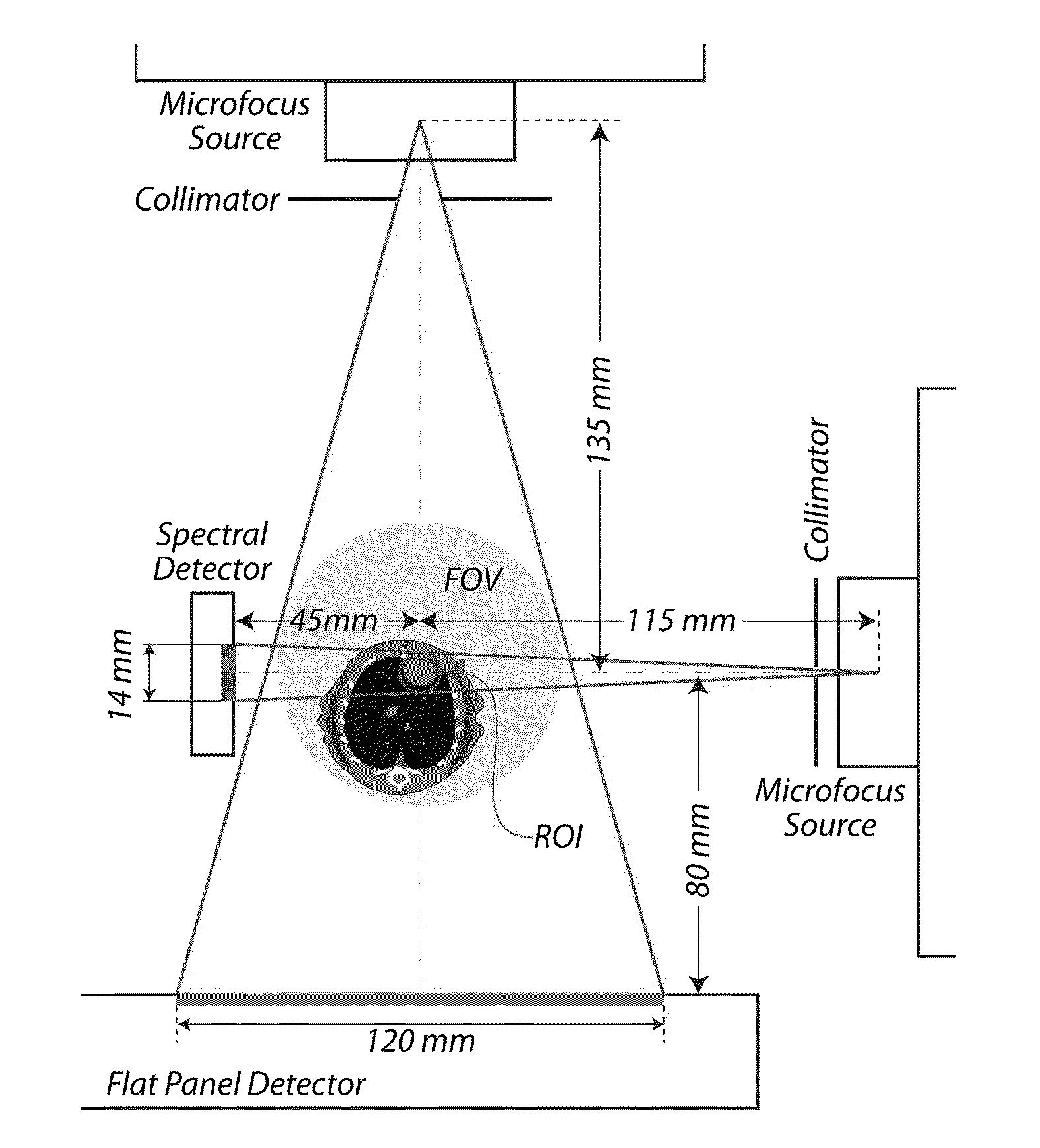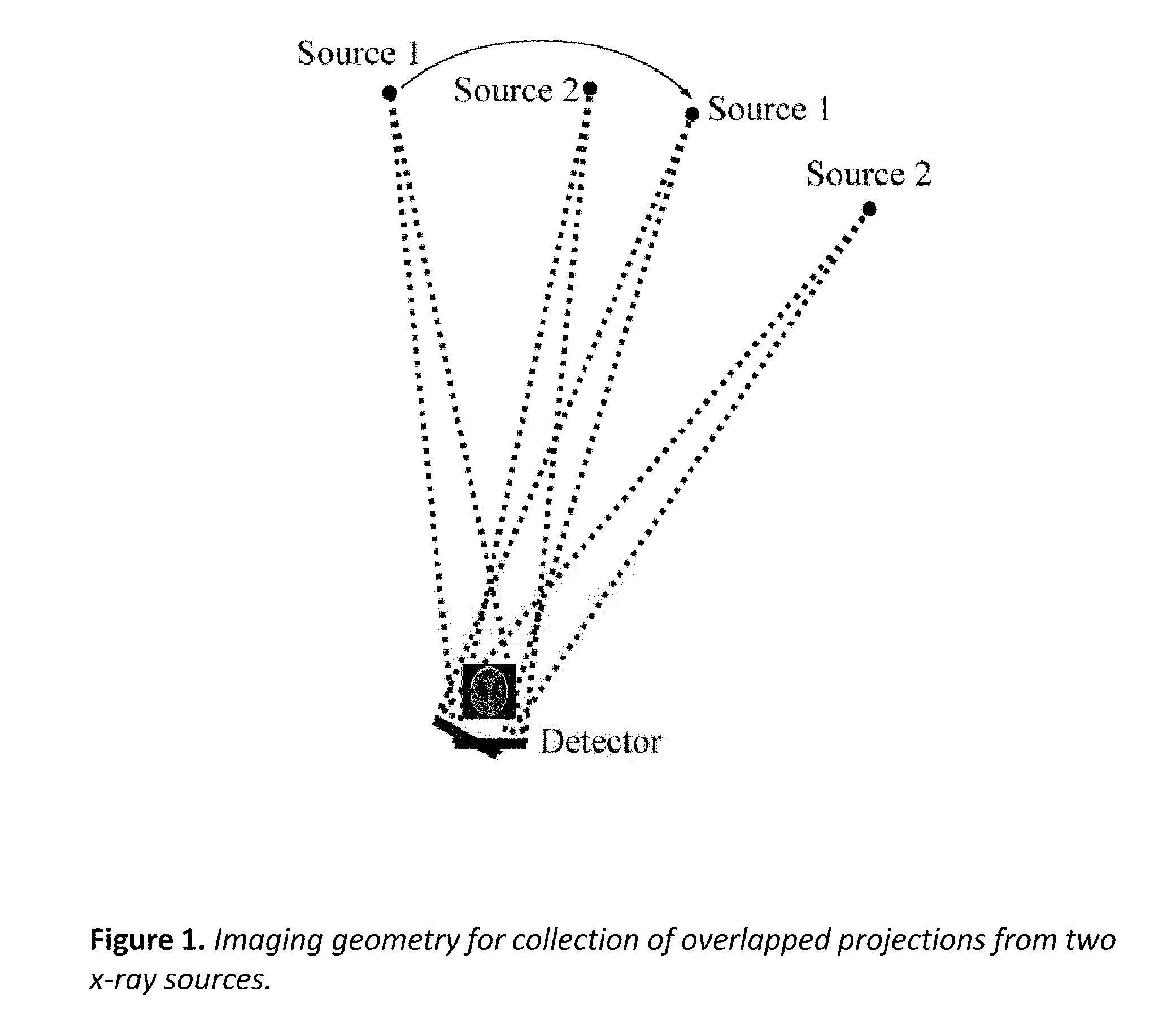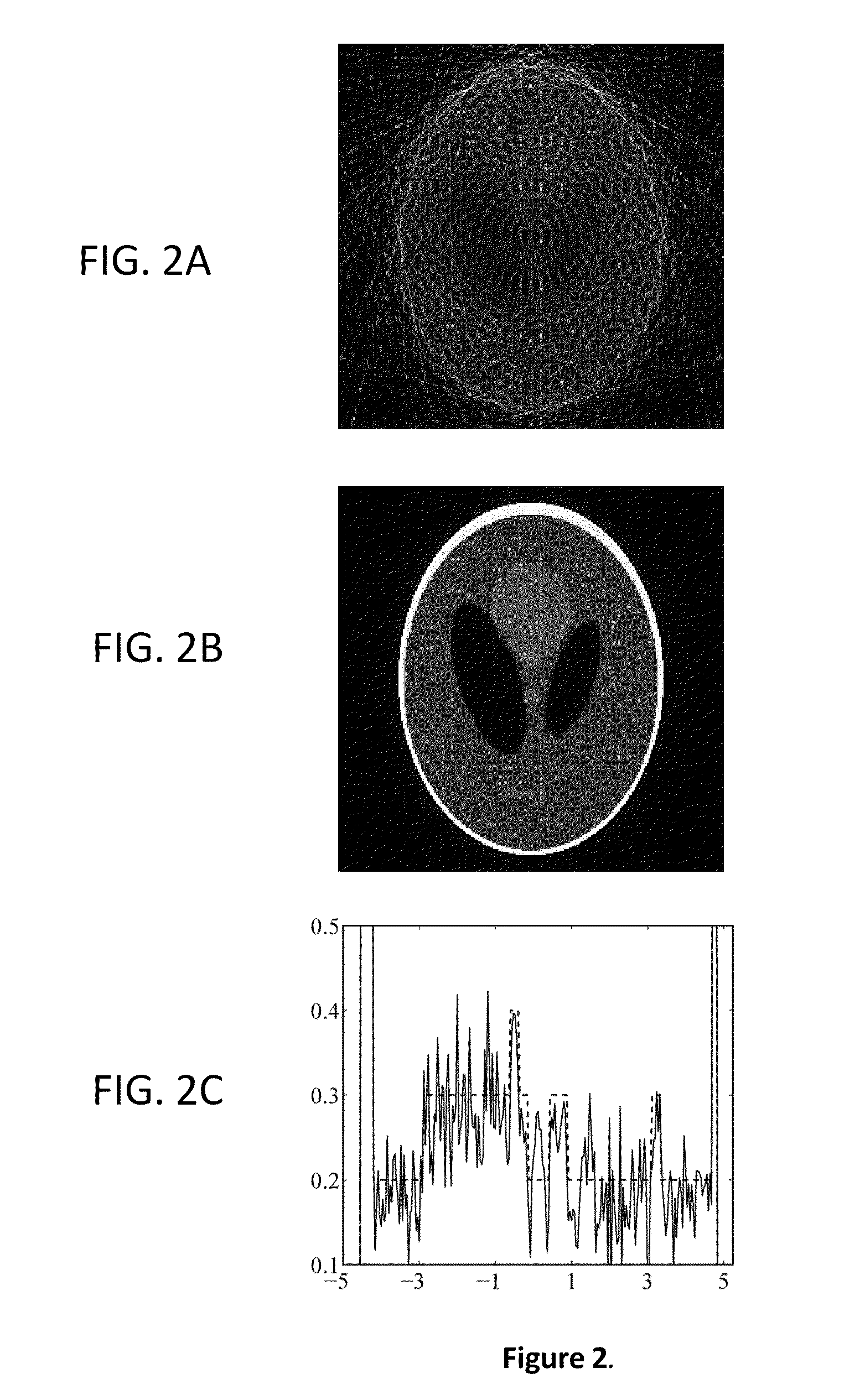Extended interior methods and systems for spectral, optical, and photoacoustic imaging
- Summary
- Abstract
- Description
- Claims
- Application Information
AI Technical Summary
Benefits of technology
Problems solved by technology
Method used
Image
Examples
Embodiment Construction
[0061]I. Image Reconstruction from Overlapped Projections
[0062]The inventors provide methods, systems, and devices capable of reconstructing an image from overlapped projections so that the data acquisition process can be shortened while the image quality remains essentially uncompromised. To perform image reconstruction from overlapped projections, the conventional reconstruction approach (for example, filtered backprojection (FBP) algorithms) cannot be directly used because of the two problems. First, overlapped projections represent an imaging system in terms of summed exponentials, which cannot be transformed into a linear form. Second, the overlapped measurement carries less information than the traditional line integrals. To meet these challenges, the inventors use a compressive sensing (CS) based iterative algorithm for reconstruction from overlapped data. This algorithm starts with a good initial guess, relies on adaptive linearization, and minimizes the total variation (TV)...
PUM
 Login to View More
Login to View More Abstract
Description
Claims
Application Information
 Login to View More
Login to View More - R&D
- Intellectual Property
- Life Sciences
- Materials
- Tech Scout
- Unparalleled Data Quality
- Higher Quality Content
- 60% Fewer Hallucinations
Browse by: Latest US Patents, China's latest patents, Technical Efficacy Thesaurus, Application Domain, Technology Topic, Popular Technical Reports.
© 2025 PatSnap. All rights reserved.Legal|Privacy policy|Modern Slavery Act Transparency Statement|Sitemap|About US| Contact US: help@patsnap.com



